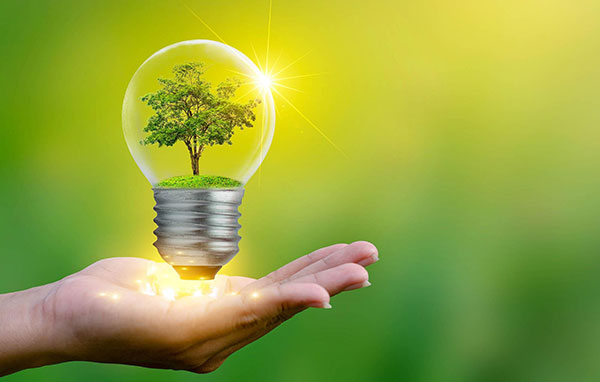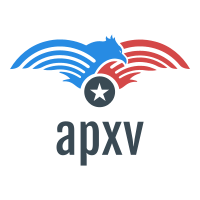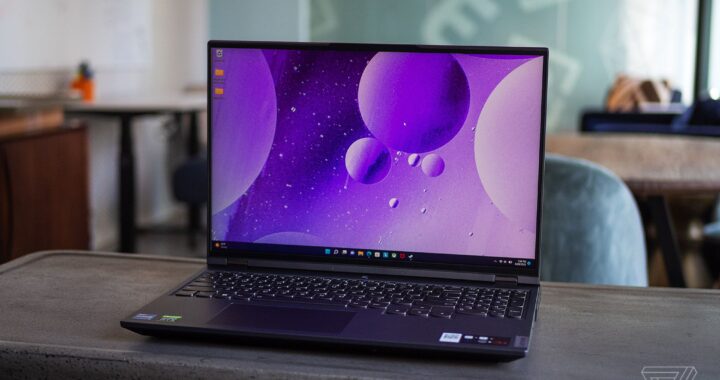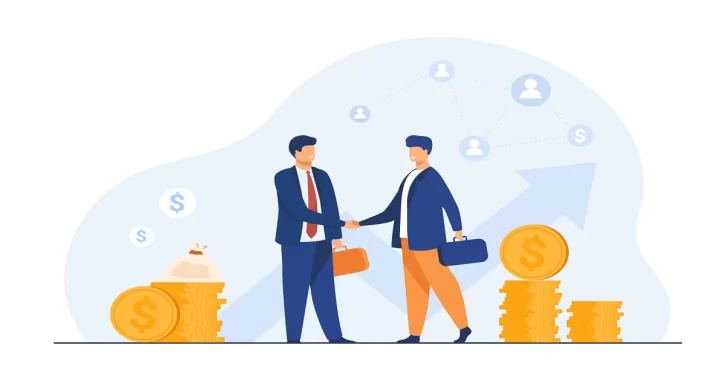The Role of Energy Providers in Promoting Energy Efficiency

Energy providers are often the first contact consumers have with energy efficiency. They can provide information about ways to save energy and access financial incentives to help reduce the cost of energy-efficient products and equipment.
They are also vital in promoting efficiency within their operations and facilities. This can be achieved through energy audits, product procurement decisions, and other measures.
Regulatory Authority
The regulatory authority is responsible for ensuring that energy suppliers offer electricity to consumers cost-effectively. This means ensuring reasonable tariffs for generation, transmission, and distribution companies. It also involves reviewing the performance of regulated firms and monitoring renewable activities.
Increasingly, energy efficiency is becoming an essential element of energy policy in most states. Sixteen governors have committed to a 100 percent carbon-free electricity goal, and twenty-eight states have existing energy savings or energy efficiency resource plans in place.
These goals can be challenging to meet in the short term, so policymakers must ensure that short-term actions fit into long-term goals such as net zero targets and enhanced energy security. This approach ensures that energy efficiency gains are not diluted and are delivered quickly and cost-effectively.
Key stakeholders and program participants should be involved in setting goals and programming to improve program success. This could include international financing institutions, utilities, nongovernmental organizations, local retailers, and installation contractors.
This type of collaborative goal-setting can help increase buy-in from key stakeholders, ensure realistic programs, and create a road map for success with which all parties will be comfortable. It can also build a positive reputation for energy efficiency, encouraging future investments in efficiency measures.
For example, a USAID mission staff working on setting residential building energy savings goals would need to engage stakeholders such as international financing institutions, utilities, local retailers, and installation contractors. They would need to discuss the target, the financial and technical incentives, and the challenges that must be overcome.
The results of these efforts should be communicated to the public through media coverage and other tools, as well as in workshops and white papers. This allows stakeholders to share their views on issues that affect the energy sector and helps maintain open communication between all interested parties.
The regulatory authority should ensure the energy sector functions effectively, providing adequate and consistent information on costs, revenues, and performance. This is an essential component of establishing a solid and competitive energy market. It is vital to provide a level playing field for competition and protect the rights of consumers to be fully informed about energy prices and costs.
Public Awareness
Public awareness is one of the essential tools for promoting energy efficiency. It is a process of raising public awareness about specific energy-related issues and educating people on how to use energy more efficiently and reduce their carbon footprint.
This can be achieved through various public awareness activities such as advertising, education campaigns, and events. Some of these campaigns can be highly targeted and help raise awareness on specific issues related to the energy industry.
Increasing awareness can encourage consumers to make positive changes and engage in actions that lead to better energy efficiency, such as switching to alternative energy suppliers. This can also improve the effectiveness of demand response and supply management programs.
The EU carries out public awareness campaigns and programs at European and national levels to achieve this goal. They include advertising, websites, exhibitions, media relations, and events.
In addition, energy providers like BKV Energy can promote energy efficiency by partnering with nonprofit organizations and associations. These organizations can provide educational material and resources relevant to the target groups and create awareness among them about the benefits of conservation measures.
These associations can also support energy efficiency in their community through various projects. These may include projects that involve installing solar panels and other renewable technologies.
These projects aim to increase access to affordable, sustainable, and environmentally friendly energy, focusing on renewable resources and clean and efficient technologies. This is a crucial component for achieving the goals of the United Nations Sustainable Development Goals.
Energy awareness and demand-response programs have been developed and implemented by energy providers across the world. These address long-term and short-term outage risks by communicating real-time information to energy users.
Similarly, many crisis campaigns encourage short-term behavior change, such as switching off lights and appliances. These programs are typically based on SMS notifications to households with smart meters. These alerts can lead to significant customer savings and are a popular way to drive behavior change.
Financial Incentives
Energy efficiency can offer numerous benefits to consumers and businesses. These include reduced energy bills, lower carbon emissions, improved energy management, and a healthier environment.
States can also implement incentives for their residents and businesses. These programs can promote the adoption of energy-efficient products and services, such as new systems, lighting, and appliances, and help lower energy costs by reducing demand for new power generation or transmission capacity.
Governors can incentivize consumers to adopt efficiency measures through state-sponsored grants or loans and establishing financing institutions. They can also highlight the value of energy efficiency to their citizens through public awareness campaigns, Governors’ awards programs, or technical assistance.
Governing bodies can also support their communities by investing in infrastructure enabling efficient energy use, such as solar photovoltaic arrays or water conservation programs. These investments can increase access to clean energy, improve air quality, and increase the resiliency of our cities and communities.
Government agencies and utilities often provide energy efficiency-related subsidies to their customers through a public or system “benefits charge” that appears on their utility bills. This charge is collected and put into a trust fund administered by the utility, a government agency, or a third party. The fund pays for energy-efficiency upgrades and provides copayments, lump sum payment discounts, or other incentive programs.
The Federal government also supports financial incentives for energy efficiency by providing tax credits to commercial and industrial customers, primarily for achieving a certain level of energy savings. This program is called the Database for State Incentives for Renewables and Efficiency (DSIRE).
In addition, many state and local governments offer funding through public-benefit programs and regional organizations to encourage residents and businesses to adopt energy efficiency measures. These organizations work with local and state governments, utility companies, nonprofits, and other organizations to create regional-wide energy efficiency initiatives.
Customer Incentives
Electricity providers have the opportunity to provide customer incentives to encourage consumers to make energy efficiency improvements. These can include rebates, credit, or cash for various reasons, such as purchasing new appliances or switching to energy-efficient bulbs.
In addition, utilities can also provide incentives to consumers who switch from another provider or refer a friend to them. This type of incentive is called a loyalty reward and can be redeemable points or credits for gifts, pre-paid balances, or cash.
Loyalty programs may also give consumers a cash payment or credit to reduce their electricity bill if they remain customers for a certain period. These incentives build consumer confidence that they will receive a fair value for their service.
These programs often use a revolving fund for equipment or energy-saving upgrades over the project’s life. They can support many improvements from lighting to HVAC to refrigeration.
Retailers can also offer incentives to customers who purchase energy-efficient products or appliances.
These incentives can help accelerate the diffusion of early-stage energy efficiency (HE) technologies. This increases market penetration for HE products and drives the learning effects that lead to efficiency gains.
This can be achieved through various strategies, including performance incentive mechanisms (PIMs), carbon pricing, and revenue decoupling. These programs are designed to shift utilities’ incentives toward building power plants and substations and encourage customer demand, which is essential to achieving climate-forward efficiency goals.
In addition, several other government programs can be designed to increase the adoption of HE technology and foster the creation of more efficient products. These include most-efficient awards and energy-efficient procurement.
These incentives can drive the development of more efficient technologies and lower the overall cost of HE products. These programs can target specific markets, such as residential or commercial.

 5 Signs It’s Time to Call a Professional Pool Repair Service
5 Signs It’s Time to Call a Professional Pool Repair Service  Exploring the Potential Health Benefits of Cassia Obtusifolia Seed Extract
Exploring the Potential Health Benefits of Cassia Obtusifolia Seed Extract  Fragrance Revival Reviewed: The Truth About This Perfume Oil
Fragrance Revival Reviewed: The Truth About This Perfume Oil  Acsoon: The Ultimate Laptop for Gamers and Professionals
Acsoon: The Ultimate Laptop for Gamers and Professionals  What is the TellHappyStar.com Survey and Why You Should Take It
What is the TellHappyStar.com Survey and Why You Should Take It  Blursoft: The Best Solution for Business Loan with Bad Credit
Blursoft: The Best Solution for Business Loan with Bad Credit  Managing Peripheral Diabetic Neuropathy: Holistic Approaches and Treatment Options
Managing Peripheral Diabetic Neuropathy: Holistic Approaches and Treatment Options  The Math Behind the Magic: How RTP Shapes Slot Payouts
The Math Behind the Magic: How RTP Shapes Slot Payouts  AI Tools That Make YouTube Shorts Creation Effortless
AI Tools That Make YouTube Shorts Creation Effortless  Mina Kimes: The Sports Journalist Who Went Viral
Mina Kimes: The Sports Journalist Who Went Viral